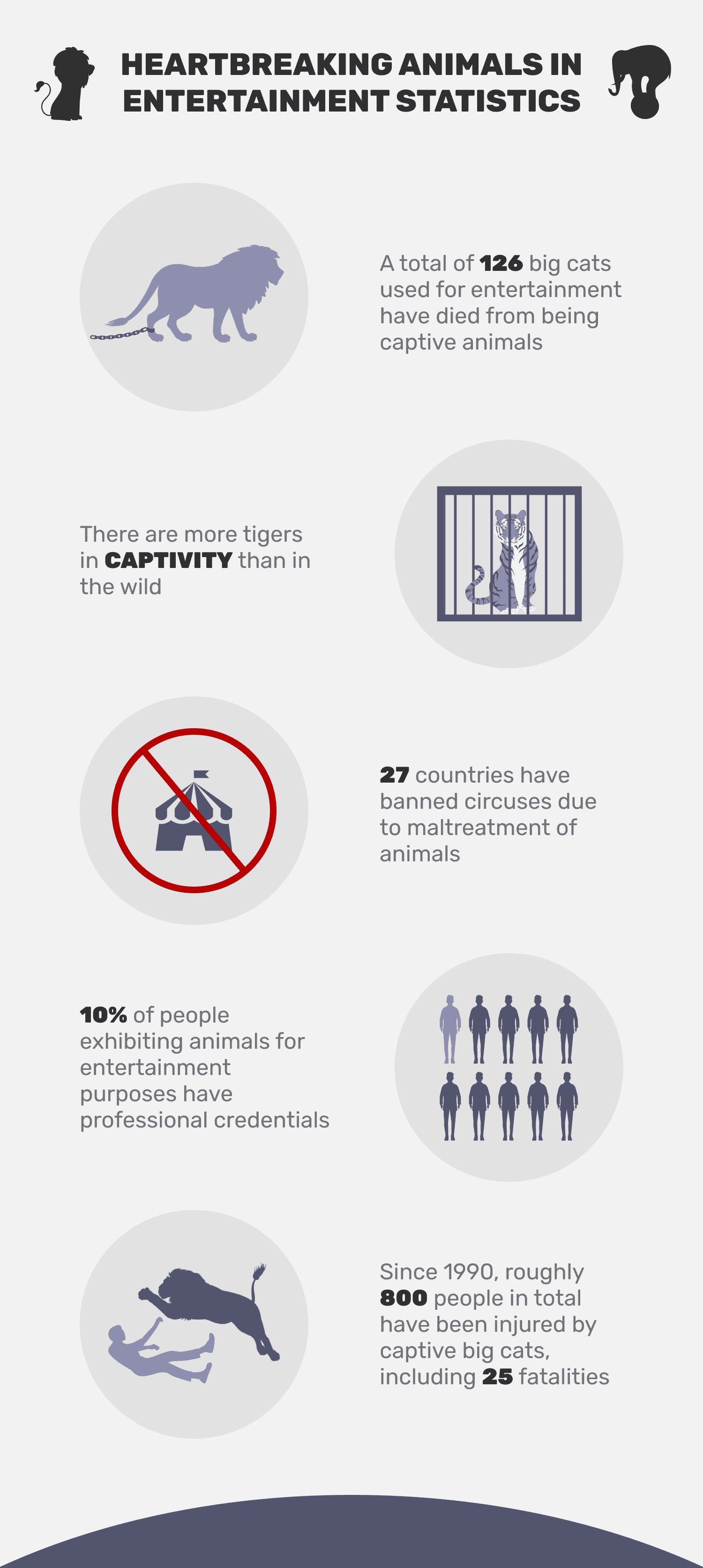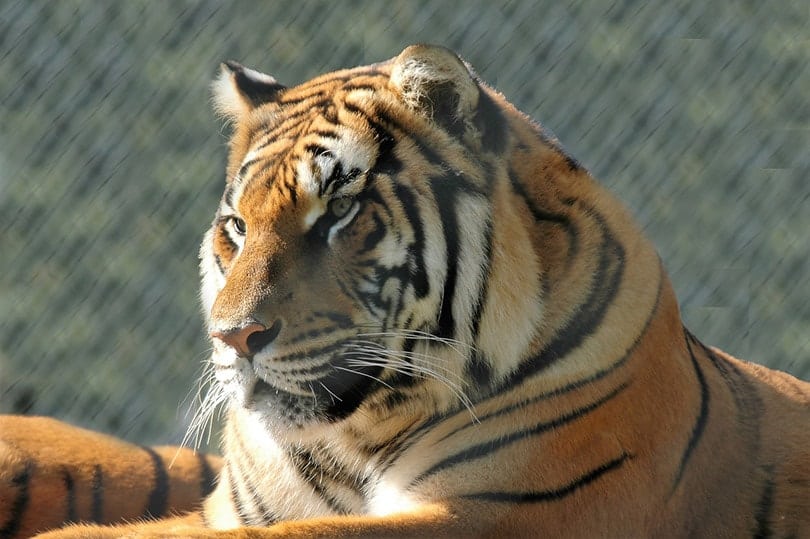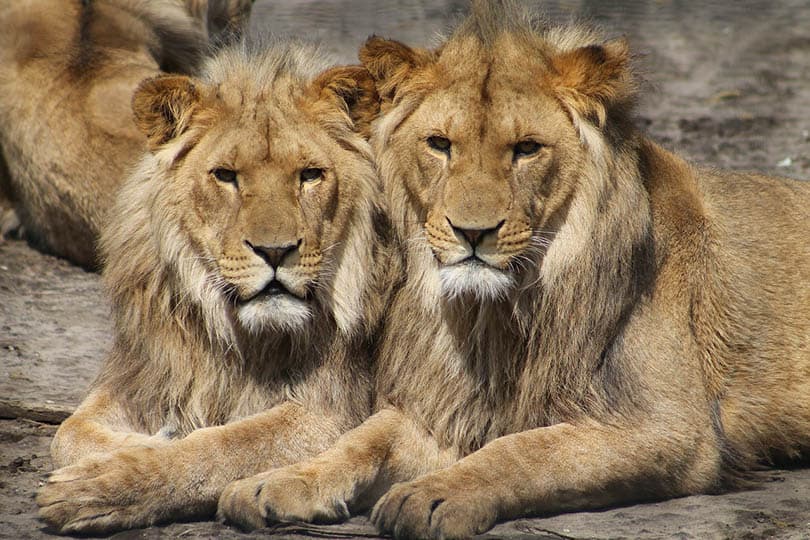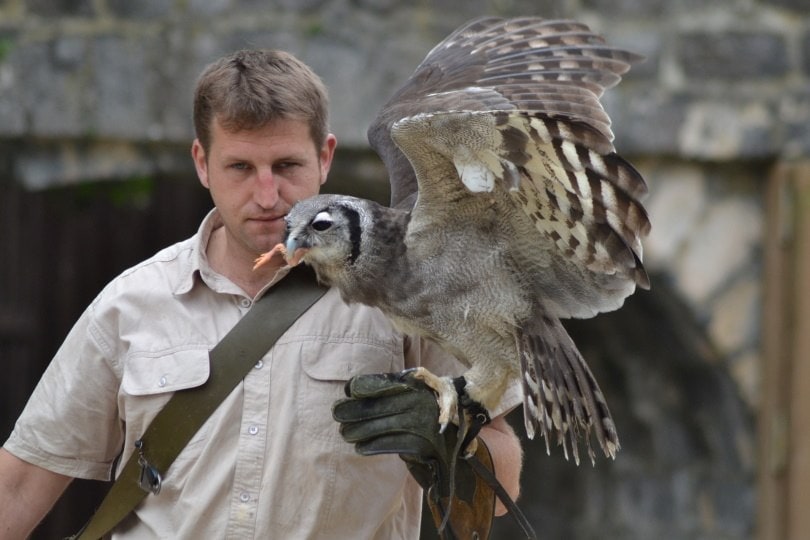Note: This article’s statistics come from third-party sources and do not represent the opinions of this website.
We must start by saying that people have come a long way in curtailing the use of animals for entertainment purposes. Venues, such as circuses and traveling shows, have decreased in recent years due to increased public awareness about the cruelty of some of these settings. Activities like cockfighting are illegal. Watchdog groups monitor animals used in TV and movies.
Laws at all levels are also protecting vulnerable species. Fines and other forms of punishment come at a high price for those that act otherwise. Nevertheless, many creatures have suffered for the cost of a few laughs or viewer ratings. Luckily, there is a bright side to the treatment of animals. Hopefully, cruelty will soon become a thing of the past. (FindLaw)
Click to Skip Ahead:

Top 13 Statistics About Animals in Entertainment
- About 126 big cats have paid the ultimate price from being captive animals.
- There are more tigers in private hands than exist in the wild.
- Fewer than 10% of the people exhibiting animals have professional credentials for this profession.
- The majority of captive animals are housed in conditions that are contrary to their habitat.
- People have paid the price of animals for entertainment, too.
- Former Atlanta Falcon quarterback Michael Vick had 70 dogs, including 51 pitbulls, in his illegal and cruel dogfighting scheme.
- Glorifying animal cruelty practices for entertainment perpetuates the problem.
- Many breeds have a sad history that has fueled cruel entertainment practices.
- Thankfully, 27 countries have banned circuses.
- Cities, counties, and states in the United States have stepped up to ban circuses.
- Increasing public awareness has put the spotlight on unethical breeding.
- Some targets of animal welfare organizations are misguided.
- Animals have a big player in their court.


Scarier Than the Clowns
1. About 126 big cats have paid the ultimate price from being captive animals.
(Smithsonian, PETA)
Big cats such as lions and leopards are some of the most dangerous animals in the world. The stats tell the stories of their carnage in various countries in Africa, such as the 35 victims of the infamous Tsavo lions of Kenya. However, captive felines have also suffered at the hands of entertainment, with 126 killed between 1990–2015.
2. There are more tigers in private hands than exist in the wild.
(World Wildlife Fund)
Unfortunately, many states allow individuals and so-called exhibitors to own wild and potentially dangerous animals. Tigers are a notable example of this oversight. The sobering thing is that there are more in private hands than exist in their native habitats. As we’ve described above, big cats are particularly problematic as the ultimate predator.

3. Fewer than 10% of the people exhibiting animals have professional credentials for this profession.
(AZA)
The Association of Zoos and Aquariums accredits professionals working in the industry. They train individuals on the best practices for animal welfare, conservation, and overall safety. Unfortunately, less than 10% of the people working in this trade have these credentials. It’s difficult to say if the animals in these facilities are receiving the proper treatment in cruelty-free settings.
4. The majority of captive animals are housed in conditions that are contrary to their habitat.
(Animal Diversity Web)
Lions are one of the most popular animals in zoos, exhibits, and shows. However, let’s consider the conditions this animal would experience in the wild. Its prey is primarily large hooved animals, such as wildebeests. The average range for a pride is 250 square miles, hardly the size of the cage you’ll see for these big cats.

5. People have paid the price of animals for entertainment, too.
(Big Cat Rescue)
Nearly 800 people have been injured by big cats, including 16 in 2021 alone. These figures include 25 fatalities, mainly in adults.

Inappropriate Forms of Entertainment
6. Former Atlanta Falcon quarterback Michael Vick had 70 dogs, including 51 pitbulls, in his illegal and cruel dogfighting scheme.
(Sports Illustrated)
Some offenders try to excuse animal cruelty activities by citing a cultural affinity for some activities, such as dogfighting and cockfighting. Such was the case of the case of former Atlanta Falcon quarterback Michael Vick’s atrocious Bad Newz Kennels. Vick and others had 70 dogs, including 51 Pitbulls in its operation. Thankfully, many of the dogs found forever homes. Vick served nearly two years in prison.
7. Glorifying animal cruelty practices for entertainment perpetuates the problem.
(Journal of Forensic Science)
Unfortunately, high-profile cases like the Vick dogfighting case perpetuate the negative association between these activities and certain breeds. Dogs such as Rottweilers and Pitbulls suffer the consequences. A disturbing pattern of antisocial behavior of pet owners and some breeds continues, prompting unnecessary bans on some dogs.

8. Many breeds have a sad history that has fueled cruel entertainment practices.
(Staffordshire Terrier Club of America)
People used to use some dog breeds for bull baiting, hence, its name. The practice was horrific. A bull was tied to a post or tree for these dogs to fight. It wasn’t until England banned this activity in the mid-1800s that the cruelty ended. Luckily for many of these dogs, enthusiasts saw the wonderful animals they were behind what happened in the ring.


The Silver Lining
9. Thankfully, 27 countries have banned circuses.
(PETA UK)
Many countries have stepped up to the plate to ban some of the crueler entertainment venues, such as circuses. The list includes 27 nations that have made them illegal. Unfortunately, the United States is not on this list.
10. Cities, counties, and states in the United States have stepped up to ban circuses.
(ALDF)
Even though there isn’t a national ban, many cities, counties, and states have taken it upon themselves to intervene for the sake of the animals used in circuses. It’s an important first step toward ending these unnecessary practices.
11. Increasing public awareness has put the spotlight on unethical breeding.
(Reproduction in Domestic Animals)
Many animals used in the entertainment industry are selectively bred for their unique qualities. Often, they benefit humans instead of the species. Luckily, public awareness has also increased. People are starting to question the necessity of these programs. That is a significant leap forward toward safeguarding the welfare of animals.

12. Some targets of animal welfare organizations are misguided.
(Nature)
Recreational hunting is a common target of animal welfare organizations. While their intentions are admirable, their focus is misguided. Some species, such as White-Tailed Deer, have adapted to humans and have increased to unsustainable numbers in the wild. Hunting is a vital part of wildlife management. These animals would suffer needlessly without the population control that it offers.

13. Animals have a big player in their court.
(AHA)
The American Humane Association (AHA) oversees the welfare of animals in entertainment. Thanks to them, you see the No Animals Were Harmed certification in any production that uses them. Animals have a valuable ally in this organization. Not only do they oversee the industry, but they also support legislation that protects the vulnerable ones.


Frequently Asked Questions About Animals in Entertainment
Is There Any Value in Zoos, Aquariums, and Other Animal Displays?
Despite the entertainment factor, zoos and aquariums serve useful purposes that go outside of the realm of this industry. Of the 8,500 species in these facilities, about 850 are ones of concern because of environmental and human threats. The AZA maintains studbooks on them to ensure the genetic viability of these animals. The organization is a vital part of conservation.
It’s worth noting that these facilities create awareness, which is a tremendous first step in conservation. It can spur consumer purchase decisions, donations, and involvement in organizations that make animal welfare their mission.
(AZA, AZA 2)
Where Do Entertainment Companies Get Animals?
The entertainment industry taps several sources for animals to use in their productions. They may go to zoos for exotic species. Other times, they may get wild animals. The companies also look to private organizations or professional ones, such as Birds and Animals Unlimited. The latter is an excellent choice since they put their charges’ welfare their primary goal.
(National Humane Education Society, Birds and Animals Unlimited)

Can Animals Treated So Cruelly Lead Normal Lives?
Luckily, many individuals and organizations have come forward to defend animals against the cruelty they sometimes endure in the entertainment industry. Rescue groups are the angels of animal welfare. Their dedication and effort have made it possible for many victims to lead normal lives in loving homes. It’s one reason why we strongly urge people to foster pets from these associations.
How Can I Help Prevent Animal Cruelty in Entertainment?
Many companies are indeed responsive to bad press from making poor decisions, such as putting animals in danger. We suggest using your wallet to support businesses that put animal welfare at the forefront. You should also reconsider supporting any organization that participates or contributes to any individual or business that crosses these lines.

Conclusion
Animal cruelty in any venue is unconscionable these days, especially for entertainment purposes. Hurting an animal for any reason isn’t necessary or warranted. Thankfully, the industry is waking up to this fact. However, the legacy is a deplorable one. While it’s heartbreaking to learn the truth, it’s vital to avoid making the same mistakes.
The wise words of George Santayana remind us that, “Those who cannot remember the past are condemned to repeat it.”
- Next on your reading list: Canada Deer Car Accidents Statistics
